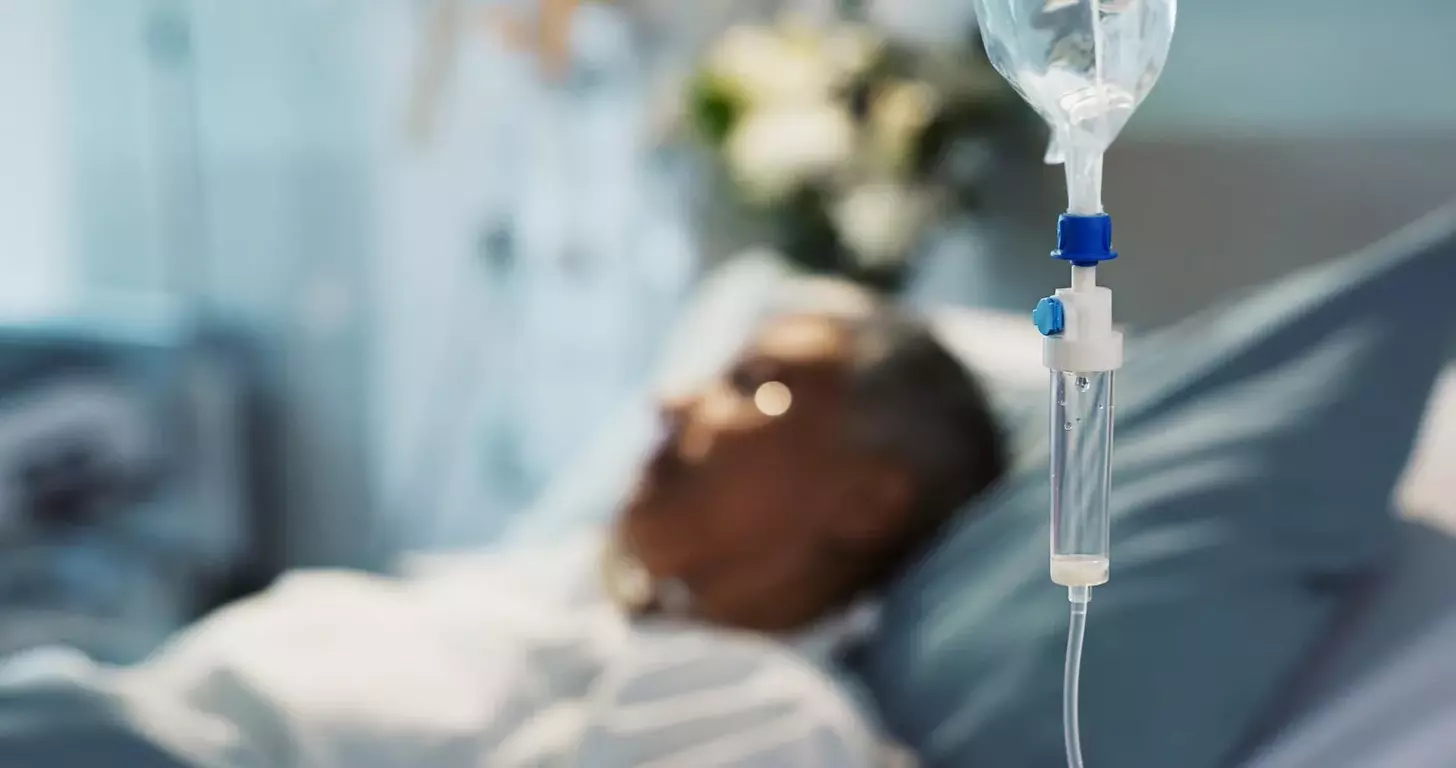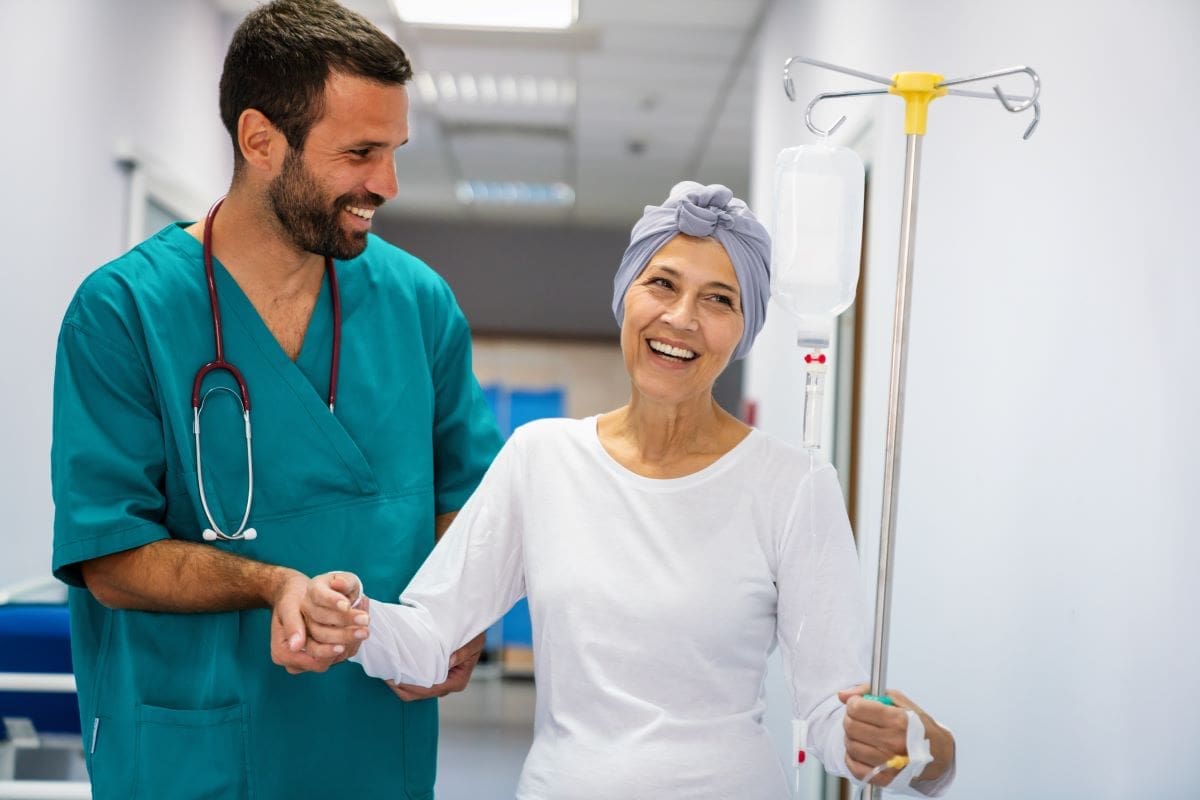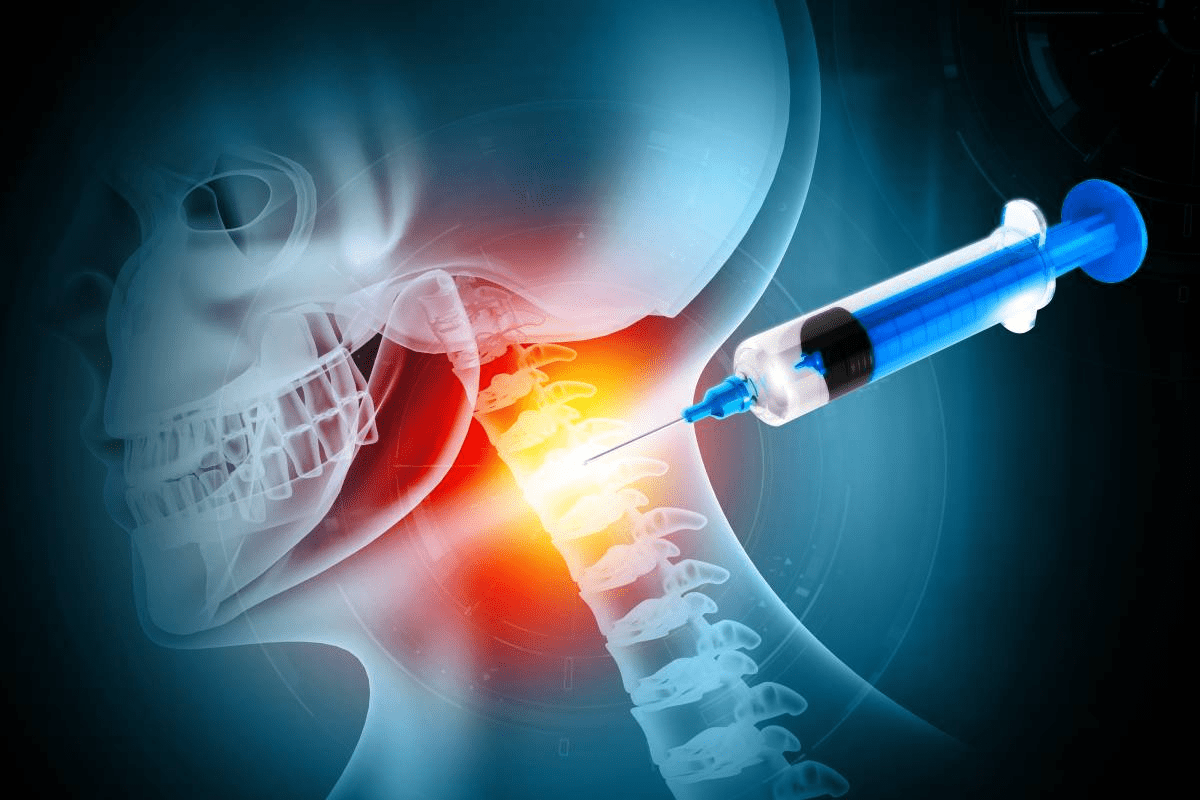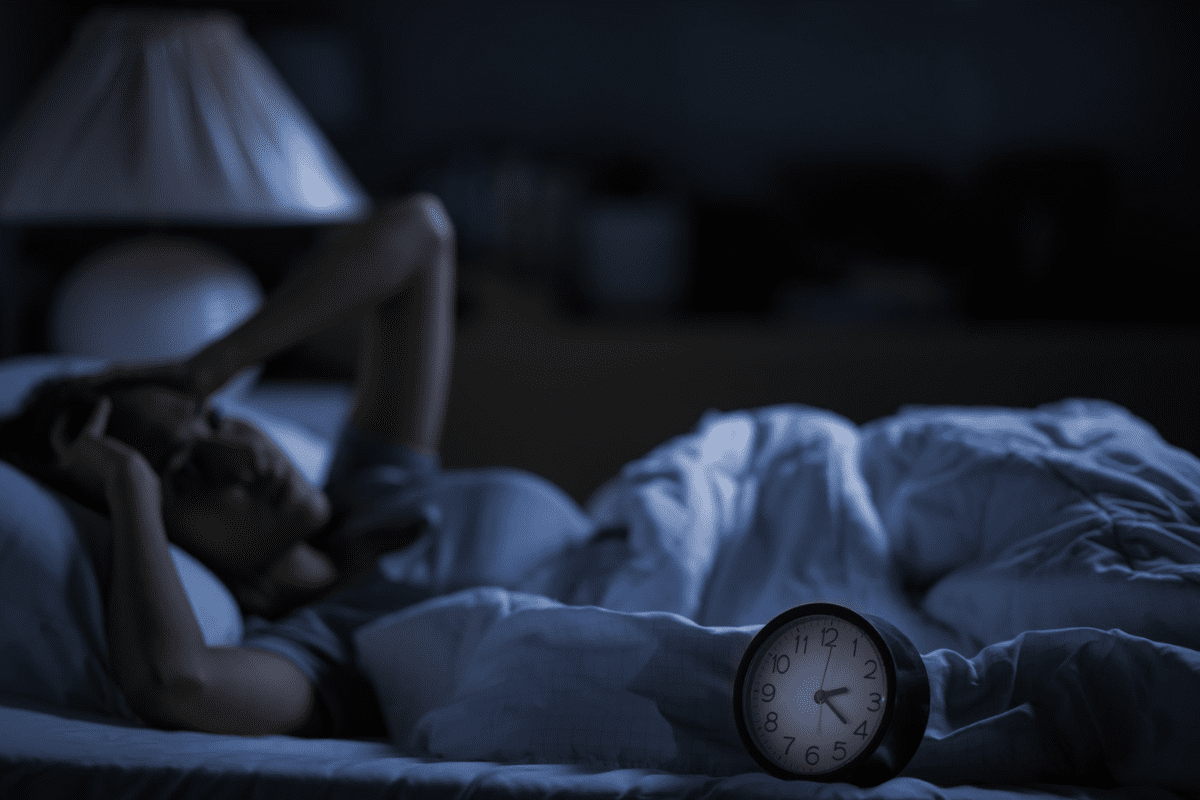Last Updated on November 26, 2025 by Bilal Hasdemir

At Liv Hospital, we know that chemotherapy can be scary. It gives hope for fighting cancer, but patients worry about the duration of its side effects. Knowing what to expect during and after treatment is key for a smooth recovery.
We see that chemo effects on the body differ from person to person. Our goal is to offer top-notch care and support. This helps patients face these challenges head-on. In this article, we’ll look at common chemotherapy side effects and how long they last. We aim to give patients the knowledge they need to manage their recovery.
Key Takeaways
- Chemotherapy side effects can vary in duration and impact.
- Understanding the possible side effects is vital for patient care.
- Liv Hospital is committed to providing full support during treatment.
- Recovery experiences can differ greatly among patients.
- Knowing about chemotherapy’s effects can help patients cope better.
Understanding Chemotherapy and Its Impact on the Body
Chemotherapy targets cells that grow fast, like cancer cells and some healthy ones. This is why it works well against cancer but also has side effects.
How Chemotherapy Targets Cancer Cells
Chemotherapy aims to kill cancer cells by attacking their fast growth. It uses drugs that harm these cells. This helps lower the number of cancer cells in the body, slowing the disease.
The process involves:
- Identifying rapidly dividing cells
- Using chemotherapy drugs to attack these cells
- Reducing the number of cancer cells to slow disease progression
Why Healthy Cells Are Affected During Treatment
Chemotherapy also hits healthy cells that grow fast. This includes cells in the bone marrow, digestive tract, and hair follicles. This leads to side effects like tiredness, nausea, and hair loss.
Key areas impacted by chemotherapy:
- Bone marrow: leading to fatigue and increased infection risk
- Digestive tract: causing nausea, vomiting, and changes in appetite
- Hair follicles: resulting in hair loss
Knowing these effects helps manage chemotherapy side effects. It improves life quality for those going through treatment.
Common Immediate Side Effects of Chemotherapy
Chemotherapy is a strong treatment for cancer that targets fast-growing cells. This includes both cancer cells and some healthy cells. Knowing what to expect can help patients deal with these side effects. These effects happen because chemotherapy affects not just cancer cells but also healthy ones, causing physical and emotional changes.
Fatigue and Energy Depletion
Fatigue is a common side effect of chemotherapy, making you feel very tired. It can make simple tasks hard. To fight fatigue, patients should prioritize rest, eat well, and do light exercises like walking.
Nausea, Vomiting, and Appetite Changes
Nausea and vomiting are common side effects of chemotherapy. They happen because the drugs affect the stomach and brain. To feel better, try eating small meals, avoid strong smells, and use anti-nausea meds as told by your doctor. Drinking clear fluids can also help.
Hair Loss and Skin Reactions
Chemotherapy can cause hair loss by affecting hair follicles. This can be hard for many. Not all drugs cause hair loss, but it’s common. Skin can also react, leading to dryness, rashes, and sensitivity. Using gentle skin care and protecting your skin from the sun can help.
Mouth Sores and Taste Alterations
Mouth sores, or mucositis, can happen because of chemotherapy’s effect on mucous membranes. Keeping your mouth clean, using a soft toothbrush, and avoiding spicy foods can help. Some may also notice changes in taste, affecting appetite and nutrition. Trying different foods and using flavor enhancers can help.
Knowing about these common side effects can help patients prepare for chemotherapy. By understanding what to expect, patients can take steps to manage their symptoms and improve their life during treatment.
How Long Do Chemotherapy Side Effects Last?
When patients start chemotherapy, they often wonder how long the side effects will last. The time it takes for side effects to go away can change a lot. This depends on the type of chemotherapy, the patient’s health, and the treatment details.
Timeline for Resolving Common Short-Term Effects
Short-term side effects like fatigue, nausea, and hair loss usually go away in weeks to months after treatment ends. For example, fatigue can stick around but usually gets better with time. Nausea and vomiting often stop soon after chemotherapy is done.
The recovery process can be divided into several stages:
- Immediate post-treatment phase (0-3 months): Most acute side effects subside.
- Early recovery phase (3-6 months): Many patients start to feel significantly better.
- Late recovery phase (6-12 months): Most short-term side effects have resolved, but some may persist.
Individual Factors That Influence Recovery Time
Several personal factors can affect how long side effects last. These include:
- Overall Health: Patients in better health tend to recover faster.
- Age: Older adults might take longer to get over chemotherapy side effects.
- Type and Dosage of Chemotherapy: Different drugs have different side effects and how long they last.
- Presence of Co-existing Health Conditions: Having other health issues can slow down recovery.
Knowing these factors helps patients and doctors plan better. It helps manage side effects and improve recovery.
Long-Term and Late-Appearing Side Effects
As cancer treatment gets better, knowing the long-term side effects of chemotherapy is key. Chemotherapy is vital in fighting cancer but can cause lasting side effects. These effects can change a patient’s life and health.
Peripheral Neuropathy and Nerve Damage
One big side effect of chemotherapy is peripheral neuropathy. It’s nerve damage that causes pain, numbness, and tingling in hands and feet. Drugs like platinum-based and taxanes often cause this.
Managing this condition needs a mix of treatments. This includes medicines for pain and alternative therapies like acupuncture. We help patients find the best way to deal with these symptoms.
Cardiovascular and Renal Complications
Chemotherapy can also harm the heart and kidneys. Some drugs can damage the heart muscle, causing heart problems. Others can hurt kidney function, leading to chronic disease.
We stress the need for regular check-ups to catch these issues early. This includes heart and kidney tests. Early detection helps us manage these problems better.
Compromised Immune Function and Infection Risk
Chemotherapy weakens the immune system, making patients more prone to infections. This risk stays even after treatment ends, as the immune system recovers slowly.
To lower this risk, we teach patients about preventing infections. This includes good hygiene, avoiding crowds, and getting vaccines. We also watch for signs of infection and treat them quickly.
Understanding the long-term side effects of chemotherapy helps patients and doctors. Together, we can find ways to manage these effects and improve outcomes.
Side Effects by Chemotherapy Administration Method
The way chemotherapy is given affects the side effects patients feel. It can be given through IV, injections, or pills. Each way has its own side effects, which we’ll look at closely.
Intravenous Chemotherapy: Site Reactions and Systemic Effects
IV chemotherapy puts drugs straight into a vein. It’s effective but can cause site reactions like redness and pain. Systemic effects include feeling tired, nauseous, and losing hair. We’ll go over these in the table below:
| Side Effect | Description | Management Tips |
|---|---|---|
| Redness and Swelling at IV Site | Inflammation caused by the IV | Apply cold compresses |
| Fatigue | Feeling extremely tired | Rest, stay hydrated |
| Nausea | Feeling queasy | Anti-nausea medication, dietary changes |
Chemotherapy Injections: Localized and Systemic Responses
Chemotherapy injections go into a muscle or under the skin. They can cause pain and swelling at the site. Systemic effects are similar to IV, like feeling tired and nauseous.
Localized Reactions: Pain, redness, and swelling can be managed with warm compresses and over-the-counter pain relievers.
Oral Chemotherapy Pills: Digestive Issues and Absorption Concerns
Oral chemotherapy pills are taken by mouth. They can lead to nausea, vomiting, and diarrhea. There are also concerns about how well the body absorbs the pills.
Tips for Managing Digestive Issues: Take pills with food, stay hydrated, and consider anti-nausea medication.
Knowing the side effects of different chemotherapy methods helps patients prepare for treatment. It also helps them manage their symptoms better.
Gender-Specific Chemotherapy Effects
Chemotherapy affects the body differently in men and women, mainly in fertility and hormones. It’s key to know these differences for tailored care. This ensures each patient gets the right treatment for their needs.
Fertility Preservation Options and Concerns
Chemotherapy can harm fertility in both men and women. Preserving fertility is a big concern for many. Women can freeze eggs or embryos, but it takes time and might delay treatment. Men can bank sperm, but it needs planning.
Talking to a doctor about fertility before starting chemotherapy is vital. We help patients understand their options and make choices about their reproductive future.
| Fertility Preservation Method | Description | Considerations |
|---|---|---|
| Egg Freezing | Retrieval and freezing of eggs for future use | Time-consuming, may delay chemotherapy |
| Embryo Preservation | Freezing of embryos created through IVF | Requires sperm donor, ethical considerations |
| Sperm Banking | Freezing of sperm for future use | Relatively quick process, but requires planning |
Hormonal Disruptions and Management Strategies
Chemotherapy can mess with hormones in both men and women. Women might experience early menopause, leading to hot flashes and mood swings. Men could see changes in testosterone, affecting their sex drive and mood.
We help manage these hormonal changes with treatments like hormone replacement therapy (HRT). Our aim is to improve patients’ quality of life.
Understanding how chemotherapy affects men and women differently helps us tailor care. Our focus is on providing complete care that boosts our patients’ well-being.
Emotional and Psychological Effects of Chemotherapy
Chemotherapy affects more than just the body. It also impacts a patient’s emotional and mental health. Understanding these effects is key to better care during cancer treatment.
Chemotherapy-Related Cognitive Changes (“Chemo Brain”)
“Chemo brain” is a big issue for many. It causes memory loss, trouble focusing, and feeling less sharp. Up to 75% of those getting chemo face these problems.
To fight “chemo brain,” try these tips:
- Do things that challenge your mind
- Use calendars and reminders to help remember
- Stay active to boost your brain power
Managing Anxiety, Depression, and Emotional Wellbeing
Chemotherapy can make anxiety and depression worse. It’s vital to get help from mental health experts. They can offer counseling, support groups, and sometimes medicine.
| Strategy | Description | Benefits |
|---|---|---|
| Mindfulness and Meditation | Practices that help calm the mind and reduce stress | Reduces anxiety, improves emotional wellbeing |
| Support Groups | Groups where patients can share experiences and connect with others undergoing similar treatments | Provides emotional support, reduces feelings of isolation |
| Cognitive Behavioral Therapy (CBT) | A form of therapy that helps patients change negative thought patterns | Helps manage depression, anxiety, and improves coping mechanisms |
Factors That Influence the Severity of Chemotherapy Side Effects
It’s important to know what affects chemotherapy side effects. Chemotherapy works differently for everyone. This depends on many factors.
Drug Type, Dosage, and Treatment Schedule
The type of chemotherapy drug, its dosage, and how often you get it matter a lot. Each drug can cause different side effects. For example, some might make you feel really sick, while others might make your hair fall out.
Doctors carefully pick the right amount of chemotherapy. They want it to fight cancer well but not harm healthy cells too much. How often and for how long you get chemotherapy also affects side effects.
Pre-existing Health Conditions and Age Considerations
Having health problems before starting chemotherapy can make things harder. Issues like diabetes, heart disease, or kidney disease can make side effects worse. Older adults might also feel side effects more because their bodies aren’t as strong.
Age is a big factor too. Older people might not handle chemotherapy as well because their bodies aren’t as good at handling it.
Genetic Factors and Individual Variability
Genetics play a role in how you react to chemotherapy. Some people might be more likely to get certain side effects because of their genes. Everyone reacts differently to chemotherapy, so treatments need to be tailored to each person.
Knowing these factors helps doctors make treatment plans that are just right for you. This can help lessen side effects and make you feel better.
Modern Approaches to Managing Chemotherapy Side Effects
Managing chemotherapy side effects is key to better life quality for cancer patients. New strategies are emerging to tackle these issues as cancer treatment advances.
Pharmaceutical Interventions and Supportive Medications
Medicines are vital in managing side effects of chemotherapy. Antiemetics control nausea and vomiting. Hematopoietic growth factors lower infection and anemia risks. We also use pain and symptom medications to improve comfort.
Ondansetron is used to prevent nausea and vomiting from chemotherapy. Filgrastim boosts white blood cell production, reducing infection risk.
| Medication | Purpose | Common Side Effects |
|---|---|---|
| Ondansetron | Prevent nausea and vomiting | Headache, constipation |
| Filgrastim | Stimulate white blood cell production | Bone pain, fatigue |
Integrative Therapies and Complementary Approaches
Integrative therapies and complementary approaches help manage side effects. Techniques like acupuncture, meditation, and yoga reduce stress and improve well-being.
Acupuncture can ease nausea and pain from chemotherapy. Meditation and yoga help with anxiety and sleep, often affected by treatment.
Nutritional Support and Hydration Strategies
Nutritional support is critical during chemotherapy. A balanced diet keeps strength up and aids recovery. We advise patients to stay hydrated and eat fruits, vegetables, and lean proteins.
Specific diets can manage side effects. Eating small meals helps with nausea. Avoiding spicy or fatty foods reduces digestive issues.
Combining medicines, integrative therapies, and nutrition helps manage side effects. This approach improves patient outcomes.
Post-Treatment Recovery Timeline
After finishing chemotherapy, patients often ask about the recovery process and its duration. Each person’s recovery is different, based on the type of chemotherapy, their health, and any pre-existing conditions. The first year after treatment is key, with big improvements often seen in the first few months.
The First Three Months: Initial Recovery Phase
The first three months after chemotherapy are a time of gradual improvement. Patients may feel tired, have hair loss, and changes in appetite. It’s important to focus on nutrition and hydration to aid in recovery. Some may benefit from specialized care programs designed for post-chemotherapy patients.
Six Months to One Year: Gradual Return to Normalcy
By six months post-treatment, many notice a big drop in side effects. Patients often feel more energetic and see a decrease in side effects’ severity. But, some side effects may appear later. Regular check-ups with healthcare providers are vital to track recovery and address any issues.
During the first year, staying healthy is important. This includes eating well and exercising regularly. The journey after chemotherapy is tough, but with the right support, many regain their health and well-being.
When to Contact Your Healthcare Provider About Side Effects
Knowing when to seek help for chemotherapy side effects is key to your safety and recovery. Chemotherapy can cause many side effects, some of which are serious. We’ll show you when to call your healthcare provider and how to talk to your medical team.
Emergency Warning Signs Requiring Immediate Attention
Some chemotherapy side effects are very serious and need quick action. It’s important to know the emergency signs:
- Fever above 100.4°F (38°C)
- Severe pain or trouble breathing
- Signs of infection, like redness, swelling, or pus
- Bleeding or bruising that doesn’t stop
- Severe nausea or vomiting that makes it hard to keep fluids down
If you see any of these signs, call your healthcare provider right away. For severe problems, go to the emergency room without delay.
Developing an Effective Communication Plan With Your Medical Team
Talking well with your healthcare provider is important for managing side effects. Here are some tips for good communication:
| Communication Tip | Description |
|---|---|
| Keep a symptom journal | Write down your side effects, when they happen, and how bad they are. This helps you and your healthcare team understand your situation better. |
| Ask questions | It’s okay to ask your healthcare provider about anything you’re worried about or don’t understand about your treatment or side effects. |
| Have a contact person | Choose someone on your healthcare team to talk to when you have questions or concerns outside of regular visits. |
By being proactive and talking openly with your healthcare provider, you can handle chemotherapy’s dangers better. This will also make your treatment experience better.
Conclusion: Navigating Life After Chemotherapy
Chemotherapy is a complex treatment that affects the body deeply. Knowing the long-term effects and how to manage them can make life better. We’ve looked at the side effects of chemotherapy, from immediate to long-term, and how they vary.
Handling long-term side effects of chemotherapy needs a team effort. Working closely with your doctor is key to managing these effects and speeding up recovery. Knowing what to expect and having support makes life after chemotherapy easier.
Dealing with ongoing side effects of chemotherapy is tough, but help is out there. We suggest staying informed, talking openly with your doctor, and seeking help when needed. With the right care, you can lessen the effects of chemotherapy and feel better overall.
FAQ
How long do chemotherapy side effects typically last?
Side effects from chemotherapy can last from a few weeks to several months or even years. This varies based on the type of treatment, your health, and other factors.
What are the most common immediate side effects of chemotherapy?
Common side effects include feeling very tired, nausea, hair loss, mouth sores, and changes in taste or appetite. These effects are usually short-term and can be managed with care and medication.
How does the method of chemotherapy administration affect side effects?
The way chemotherapy is given can affect side effects. For example, getting it through an IV might cause site reactions. Taking it by mouth can lead to stomach problems.
Can chemotherapy cause long-term side effects?
Yes, chemotherapy can lead to long-term side effects. These include nerve damage, heart problems, and a higher risk of infections. It’s important to keep getting care and monitoring for these effects.
How can I manage chemotherapy side effects?
Managing side effects involves using medicines, supportive care, and nutrition. Tailoring these approaches to your needs can help you feel better and improve your outcome.
What factors influence the severity of chemotherapy side effects?
Several factors can affect how severe side effects are. These include the type of drug, dosage, treatment schedule, your health before treatment, age, and genetics.
How can I communicate effectively with my healthcare provider about side effects?
To communicate well, report side effects quickly, ask questions, and seek help for symptoms. Knowing emergency signs that need immediate help is also key.
Are there gender-specific effects of chemotherapy?
Yes, chemotherapy can affect men and women differently, including fertility and hormones. It’s important to talk to your healthcare provider about these concerns.
What is “chemo brain,” and how can it be managed?
“Chemo brain” is cognitive changes like memory and focus problems after chemotherapy. Managing it involves cognitive training, lifestyle changes, and stress management.
How long does it take to recover from chemotherapy?
Recovery from chemotherapy can take months to a year or more. The first three months are often the toughest, with gradual improvement after that. Knowing the recovery timeline helps prepare you for what to expect.
What are the signs that I should seek immediate medical attention for chemotherapy side effects?
Seek immediate help for severe symptoms like trouble breathing, chest pain, severe bleeding, or signs of infection like fever or chills. Know these signs and contact your healthcare provider right away if you have them.








